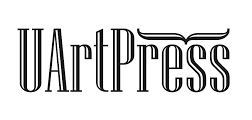Gender és nyelvi viselkedés az új médiában
Keywords:
gender, language useAbstract
Gender and Linguistic Behaviour in the New Media
The issue of gender roles is a major topic in Hungarian traditional and online media, especially due to the fact that it was a leading subject in public life over the course of 2015. Several well-known personalities (politicians, and a defining figure of the cultural life) made statements and expressed their opinions about women’s place in society and family, triggering extreme reactions. Facebook was one of the spaces where the debate was the most aggressive, where people shared their views with their names and faces, without being moderated or censored. Our aim is to analyze the Facebook pages of the most followed Hungarian online press products from a gender linguistic point of view, more exactly the comments under the posts about the topic in question. Particular emphasis is placed on the linguistic and non-linguistic strategies that lead to constructing the classical and non-classical gender roles and stereotypes in Facebook communication.
References
BODÓ, Csanád. 2012. A dzsender-paradoxon és magyar szociolingvisztikai recepciója. TNTeF. 2/2. 93–112.
BUCHOLTZ, Mary. 2003. Theories of Discourse and Theories of Gender: Discourse Analysis in Language and Gender Studies, in Holmes, J. and Meyerhoff M. (szerk.): The Handbook of Language and Gender. Oxford: Blackwell, 43–68.
BUTLER, Judith. 1990. Gender Trouble: Feminism and the Subversion of Identity. Routledge.
BUTLER, Judith. 1993. Bodies that Matter: On the Discoursive Limits of “Sex”. London–New York: Routledge.
CAMERON, Deborah. 1995. Verbal Hygiene. London–New York: Routledge.
CAMERON, Deborah. 2003. Gender and Language Ideologies, in Holmes, J. and Meyerhoff M. (szerk.): The Handbook of Language and Gender. Oxford: Blackwell, 447–467.
COATES, Jennifer. 2004. Women, Men and Language: a Sociolinguistic Account of Gender Differences in language. 3. kiadás. Harlow: Longman.
HOLBOROW, Marnie. 1999. The Politics of English: A Marxist View of Language. London: Sage.
HOLMES, Janet. and MEYERHOFF, Miriam. 2003. The Handbook of Language and Gender. Oxford: Blackwell.
HUSZÁR, Ágnes. 2009. Női nyelv? Férfi nyelv? Gendernyelvészet Magyarországon. Magyar Tudomány. 176/3. 276–285.
JAMES, Deborah. – DRAKICH, Janice. 1993. Understanding Gender Differences in Amount of Talk: a Critical Review of Research, in Tannen, D. (ed.) Gender and Conversational Interaction. New York: Oxford University Press, 281–312.
LAKOFF, Robin. 1975. Language and Woman’s Place. New York: Harper & Row.
MCELHINNY, Bonnie. 2003. Theorizing Gender in Sociolinguistics and Linguistic Anthropology, in Holmes, J. and Meyerhoff M. (szerk.): The Handbook of Language and Gender. Oxford: Blackwell, 21–42.
TANNEN, Deborah. 1990. You Just don’t Understand: Women and Men in Conversation. New York: William Morrow.
WEST, Candace, ZIMMERMAN, ; Don. H. 1987. Doing Gender. Gender & Society, 1(2), 125–151.
WARDHAUGH, Ronald. 2006. An Introduction to Sociolinguistics. Oxford: Blackwell.
Downloads
Published
How to Cite
Issue
Section
License
CC-BY permits any use, reproduction, distribution, self-archiving and citation of the work as long as the authors are credited. The complete bibliographical data of Symbolon Journal must also be indicated, which you can find in the How to cite section on this page. If possible, please also place a link leading to the original publication.
Copyright of the paper belongs to the author(s).




